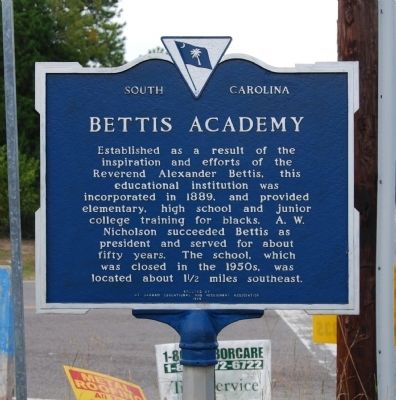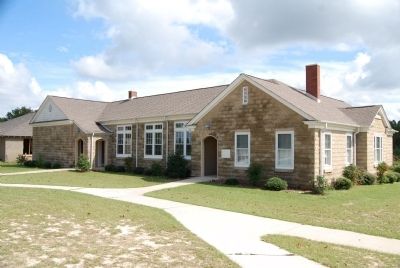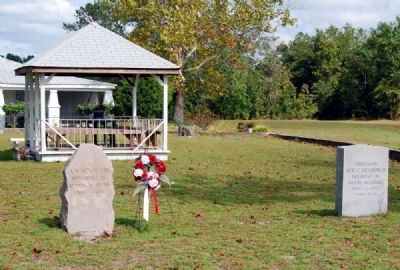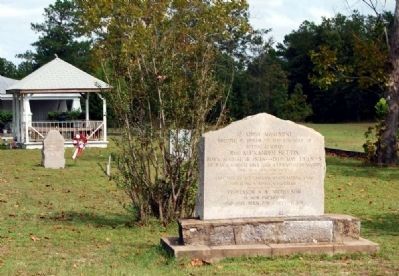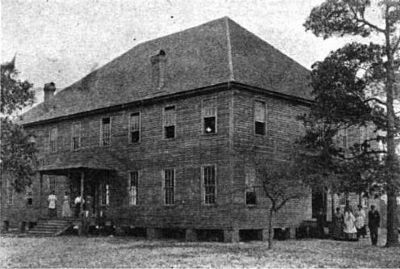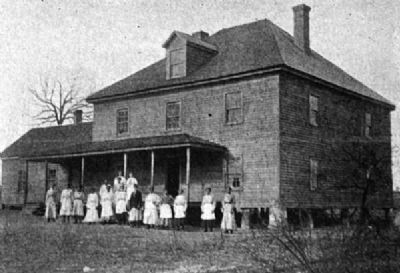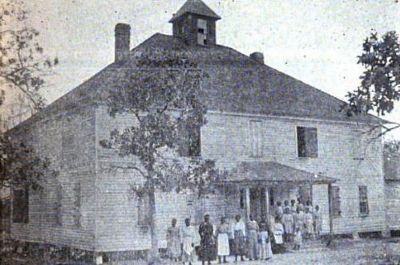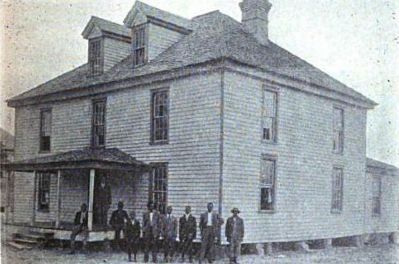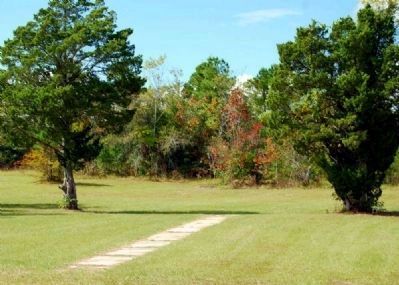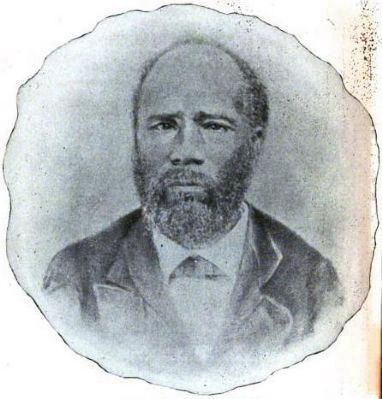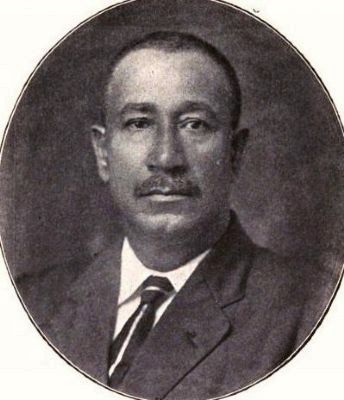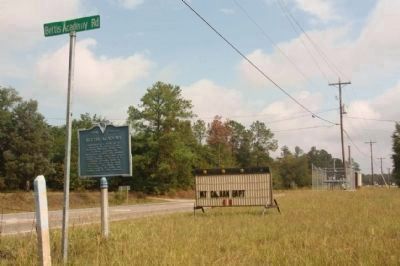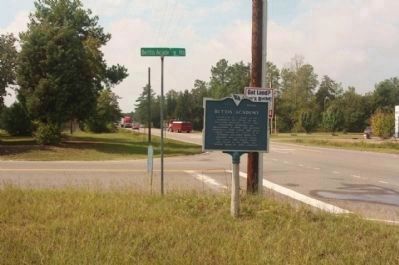Trenton in Edgefield County, South Carolina — The American South (South Atlantic)
Bettis Academy
Established as a result of the inspiration and efforts of the Reverend Alexander Bettis, this coeducational institution was incorporated in 1889 and provided elementary, high school, and junior college training for blacks. A.W. Nicholson succeeded Bettis as president and served about fifty years. The school, which closed in the 1950s, was located about 1 1/2 miles southeast.
Erected 1979 by Mt. Canaan Educational and Missionary Association. (Marker Number 19-9.)
Topics. This historical marker is listed in these topic lists: African Americans • Churches & Religion • Education. A significant historical year for this entry is 1889.
Location. 33° 39.933′ N, 81° 52.85′ W. Marker is in Trenton, South Carolina, in Edgefield County. Marker is on Bettis Academy Road, on the left when traveling south. Marker is located in the northeast corner of the intersection of Bettis Academy Road and U.S. 25. Touch for map. Marker is in this post office area: Trenton SC 29847, United States of America. Touch for directions.
Other nearby markers. At least 10 other markers are within 8 miles of this marker, measured as the crow flies. Mt. Canaan Baptist Church (approx. ¼ mile away); a different marker also named Bettis Academy (approx. 1.3 miles away); 12 Stone Monument (approx. 1.4 miles away); Horn's Creek Church (approx. 5 miles away); Horns Creek Baptist Church / Revolutionary Skirmish at Horns Creek (approx. 5 miles away); Darby (approx. 5.9 miles away); Benjamin R. Tillman House (approx. 6 miles away); Marie Cromer Seigler House (approx. 7 miles away); Farm Bell (approx. 7.8 miles away); Leavelle McCampbell School (approx. 8 miles away). Touch for a list and map of all markers in Trenton.
Also see . . .
1. Bettis Academy and Junior College. Bettis Academy and Junior College, established in 1881 and closed in 1952, is significant for its role in the primary, secondary, and higher education of African Americans in what is now Edgefield, Aiken, Greenwood, and Saluda Counties from the late nineteenth through the mid-twentieth century. (Submitted on October 21, 2008, by Brian Scott of Anderson, South Carolina.)
2. The Bettis Academy: Restoration, Preservation, Heritage Museum, and Tourist Project. Founded by Rev. Alexander Bettis, a former slave, the Bettis Academy was established as a school for African-Americans at a time when educational opportunities for blacks were practically nonexistent. (Submitted on October 21, 2008, by Brian Scott of Anderson, South Carolina.)
3. Brief Sketch of the Life and Labors of Rev. Alexander Bettis by Alfred W. Nicholson. (Submitted on October 21, 2008, by Brian Scott of Anderson, South Carolina.)
Additional commentary.
1. Bettis Academy and Junior College
Bettis Academy and Junior College, located on what was once a campus of fourteen classrooms, dormitory, and related buildings near Trenton, in Edgefield County, South Carolina, now consists of three historic buildings and one historic landscape, all dating from the last twenty years of the institution, which closed in 1952.
These properties contribute to the historic character of the campus:
1. Alexander Bettis Community Library (1938): Constructed of rock-faced with tooled draft imitation stone blocks molded by student labor, this bungalow-form building was built as the Bettis Academy and Junior College Library. Featuring imitation stone block pedestals with textured-stucco battered piers supporting a wraparound porch, the library boasted some 4,000 volumes in the mid-1940s, now (1998) serves as a community library and meeting hall. The low, dual-pitched pyramidal roof is clad in V-crimp metal sheeting, which also covers a small one-bay rear ell and shed-roofed side porch supported
by similar but ziggurat-type or staged piers stop pedestals.
2. Classroom Building (ca. 1935): This bungalow-influenced, stuccoed-brick building with expansive V-crimp metal-clad hip roof was constructed by students to house classrooms and later included some dormitory space as well. It features exposed rafter tails, gable hoods with knee-braces over entry stoops on the principal facade and both side elevations, and tripartite windows, some of the sash of which is no longer intact. The building is presently (1998) used in part for storage; however, is largely unused.
3. Biddle Hall (1942): Also constructed of rock-faced with tooled draft imitation stone blocks molded by student labor, the building was named for Mr. and Mrs. Clement S. Biddle of New york, who donated the funds for a "modern home economics unit" at Bettis Academy and Junior College. Of the three intact historic academic buildings now on the campus, Biddle Hall exhibits the most stylistic sophistication. In form it is more akin to the classically-inspired or Colonial Revival secondary schools of the rural South. It features a H or I plan, whereby it has a lateral middle section that is flanked by gable-front wings which extend to the front and rear. At the center of the building's facade, it features three paired windows of six-over-six light sash [presently boarded over to protect
it from the elements]. At the left (northwest) wing is a solid wall with pedimented gable clad in weatherboard and featuring a bull's eye window or oculus. A roof extension at the interior corner provides for a segmental-arched portal entry. At the right (southwest) wing (principal entry) is a three-bay wing with an engaged segmental-arched portal, two single six-over-six, double-hung sash windows, and gable with boxed cornice and returns. A marble inlaid tablet next to the entry reads "Biddle Hall Erected 1942." Window openings around the building are either single or paired, each with six-over-six, double-hung sash. As the ground recedes towards the building's rear, a brick foundation and water table become more visible. A one-bay boxed cornice with returns cross gable is present at center of southwest (side) elevation. At least three corbel-sapped chimneys rise above the roofline. On the building's interior, in the home demonstration segment, can be seen a decorative brick fireplace with simple mantel shelf in the living room, built-in closets, and a kitchen. Other segments include partitioned areas for sewing, cooking, and assembly. Presently (1998) vacant/not in use, plans are underway to raise funds for its renovation as an African-American museum.
4. Bettis Academy and Junior College Park (1942): A triangular park including monuments to three presidents
of the Academy: Rev. Alexander Bettis, Alfred W. Nicholson, and Acie C. Hightower. This area features cast stone coping, steps, and historic plantings, principally mature sycamore trees.
Statement of Significance
Bettis Academy and Junior college, established in 1881 and closed in 1952, is significant for its role in the primary, secondary, and higher education of blacks in what is now Edgefield, Aiken, Greenwood, and Saluda Counties from the late nineteenth century through the mid-twentieth century, in a period when black education was neglected by many of the public and private institutions in South Carolina.
Alexander Bettis (1836-1895), founder of Bettis Academy, was born a slave on a nearby Edgefield District plantation owned by a widow Jones and worked as an overseer and sawmill manager during the Civil War. In 1868, after the local Baptist association refused to ordain him, Bettis and a group of seventeen blacks, helped by three ministers affiliated with the association, organized Mt. Canaan Baptist Church ten miles west of Trenton. Bettis, once ordained by the newly-established church, then helped organize as many as forty Baptist churches in the area, serving four -- Mt. Canaan, Shaw's Creek, Jeters, and Pleasant Grove -- continuously until his death in 1895.
Bettis Academy was an outgrowth of the Mt. Canaan Educational Association,
founded in 1880 by Bettis and other ordained ministers and representatives of various black Baptist churches in the area. The association, created to raise money and establish schools to serve the black community, purchased 27 acres at this site near the boundary of Edgefield and Aiken Districts and set aside the remainder of its funds for lumber. The land was cleared in the summer of 1881, and after the first school building -- a one-room frame classroom building -- was completed that fall it was dedicated and opened on New Years' Day 1882. The school became a boarding school in its earliest years, with a girls' dormitory built in 1883 and a boys' dormitory built in 1884. The curriculum at Bettis Academy included, in addition to the standard academic subjects, religious instruction, teacher training, and instruction in farming and home economics. Under the leadership of Alfred W. Nicholson, who served as principal 1900-1945, Bettis Academy expanded its student body to more than 1,000 students, its campus to fourteen buildings on more than 300 acres, and its curriculum to include instruction from the first grade through the junior college level. The academy and junior college, always strapped for funding for teachers, buildings, and equipment, was finally forced to close in 1952. (Source: National Register nomination form.)
— Submitted January 1, 2010, by Brian Scott of Anderson, South Carolina.
2. National Register of Historic Places:
Bettis Academy and Junior College (added 1998 - - #98000560)
Period of Significance: 1925-1949
— Submitted September 25, 2011, by Mike Stroud of Bluffton, South Carolina.
Credits. This page was last revised on November 15, 2020. It was originally submitted on October 21, 2008, by Brian Scott of Anderson, South Carolina. This page has been viewed 3,386 times since then and 294 times this year. Photos: 1, 2. submitted on October 21, 2008, by Brian Scott of Anderson, South Carolina. 3, 4, 5, 6, 7, 8, 9, 10, 11. submitted on January 2, 2010, by Brian Scott of Anderson, South Carolina. 12, 13. submitted on September 25, 2011, by Mike Stroud of Bluffton, South Carolina.
